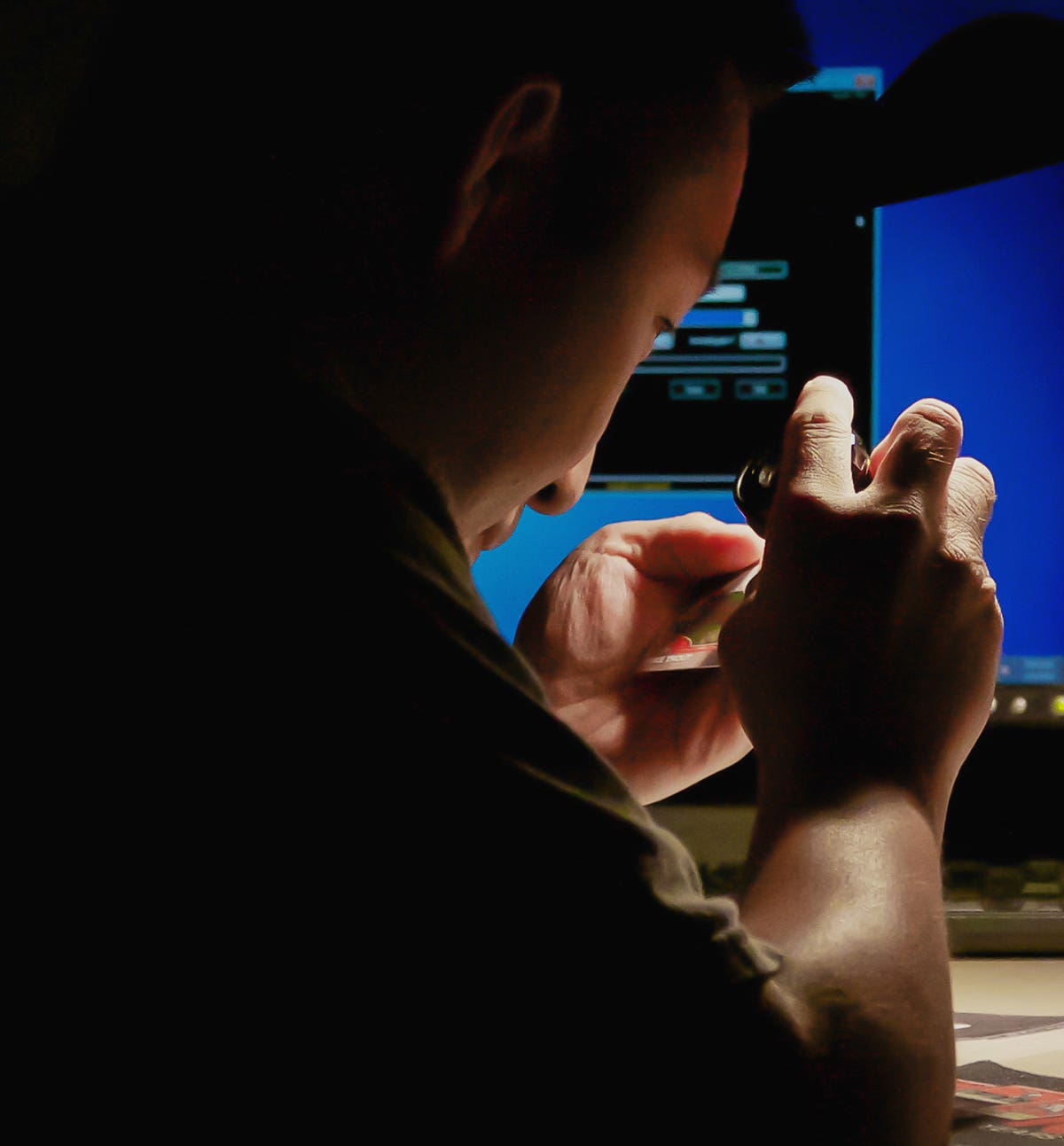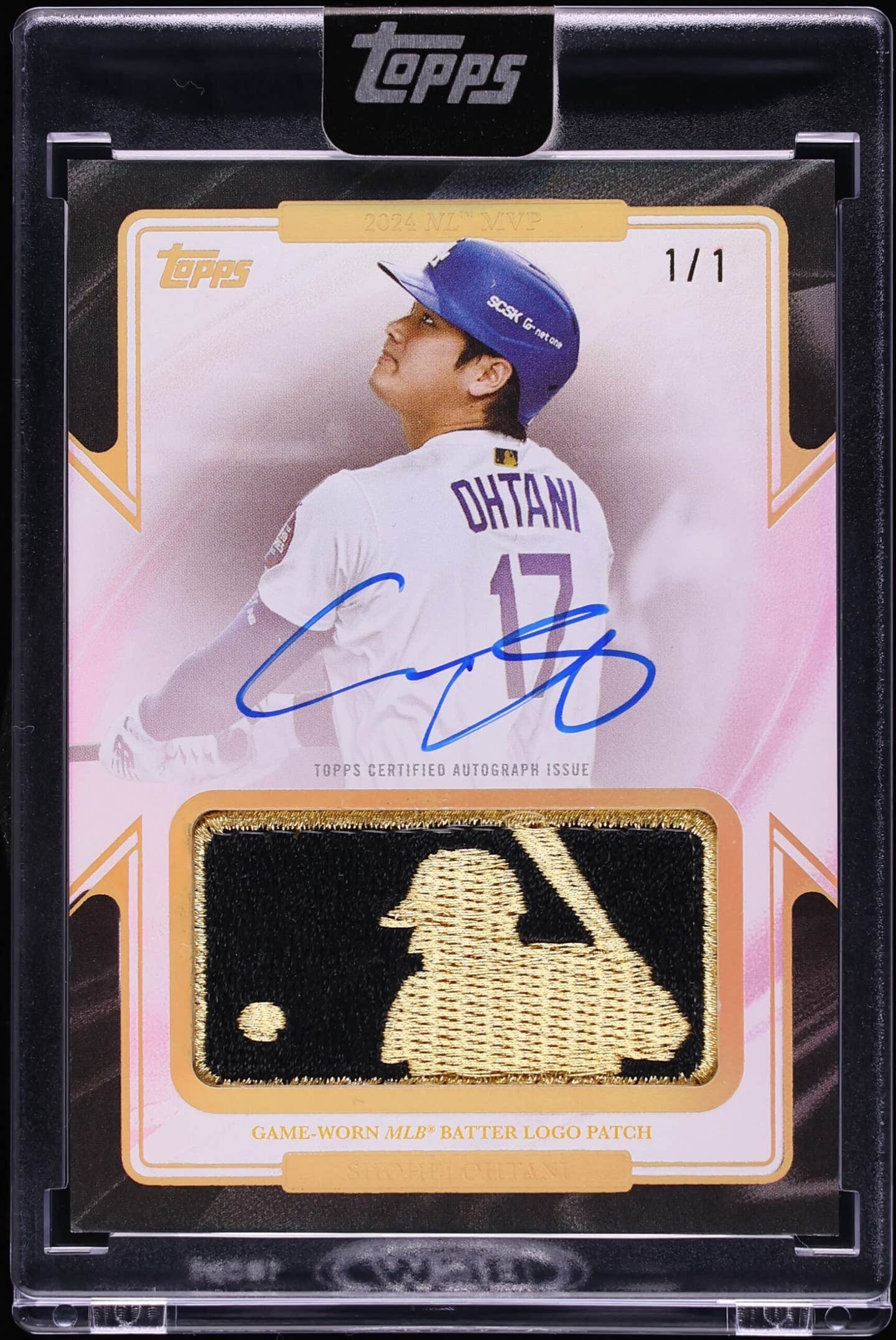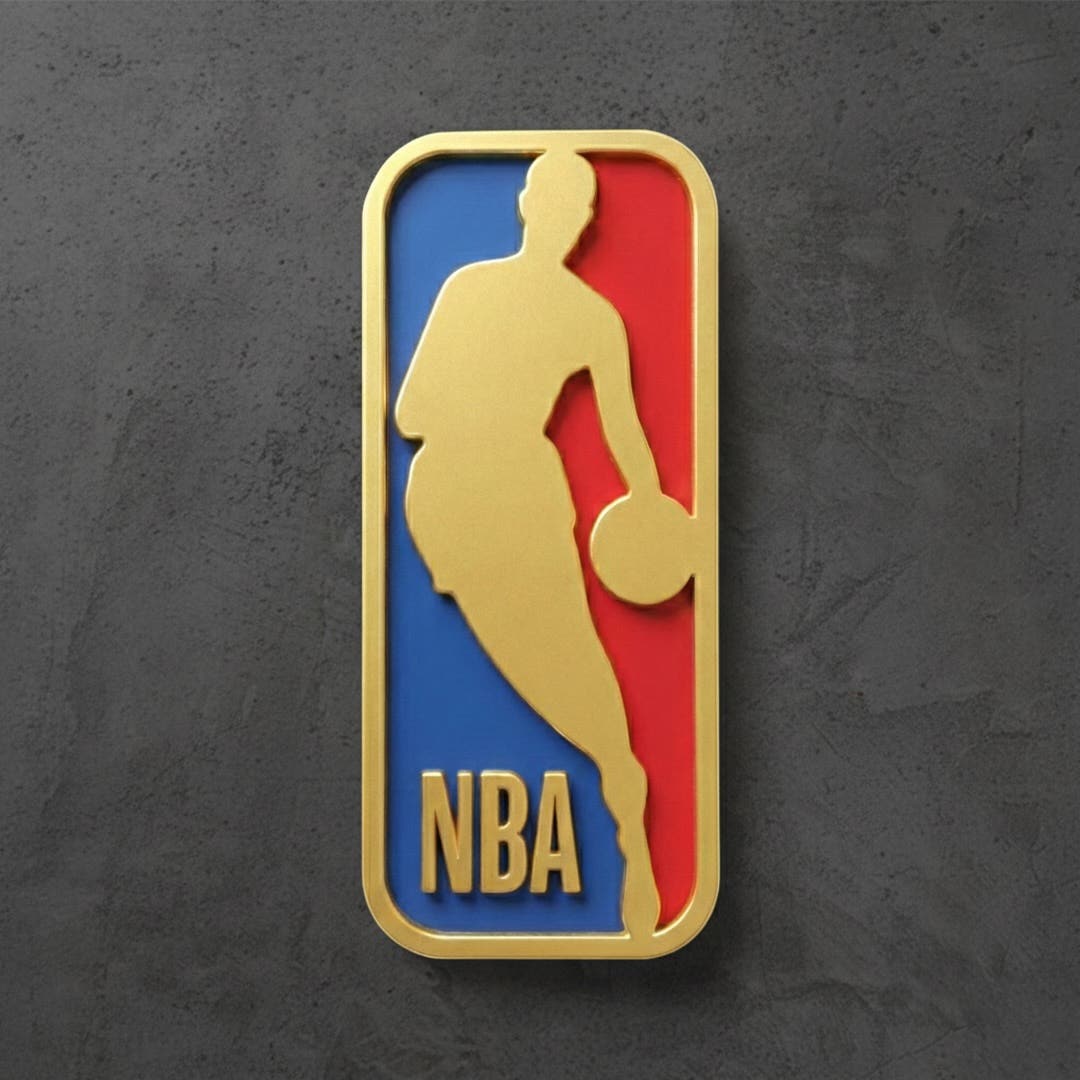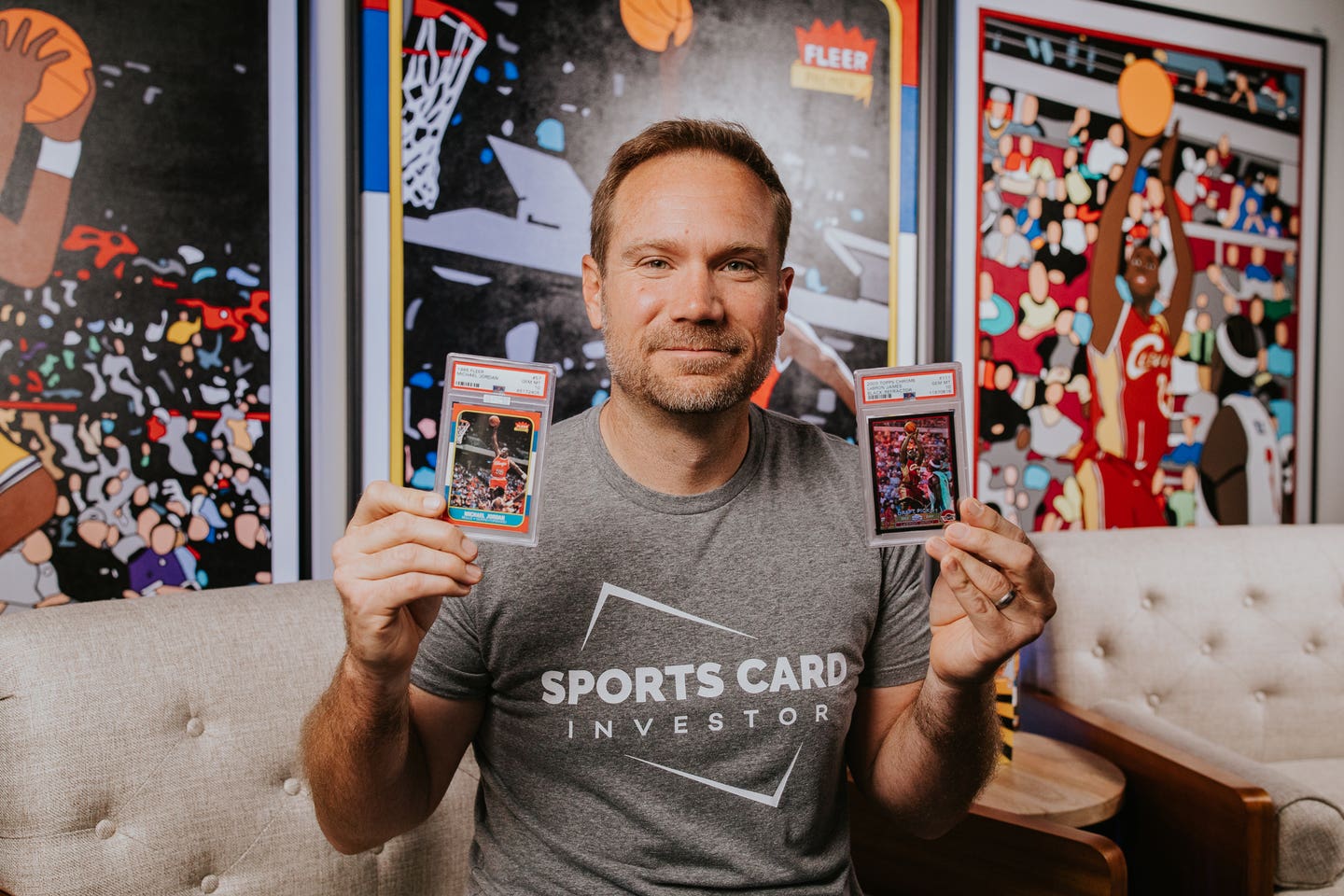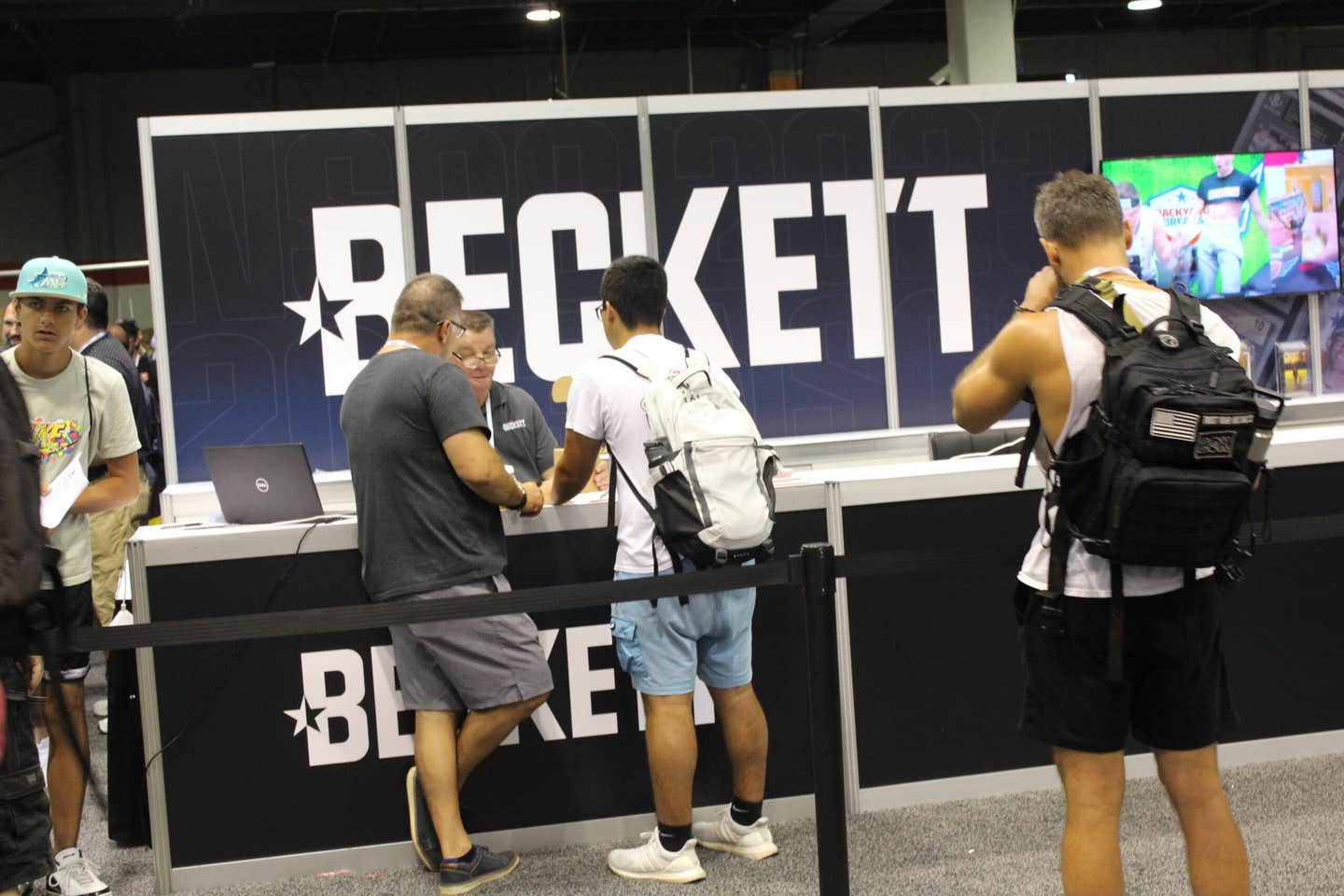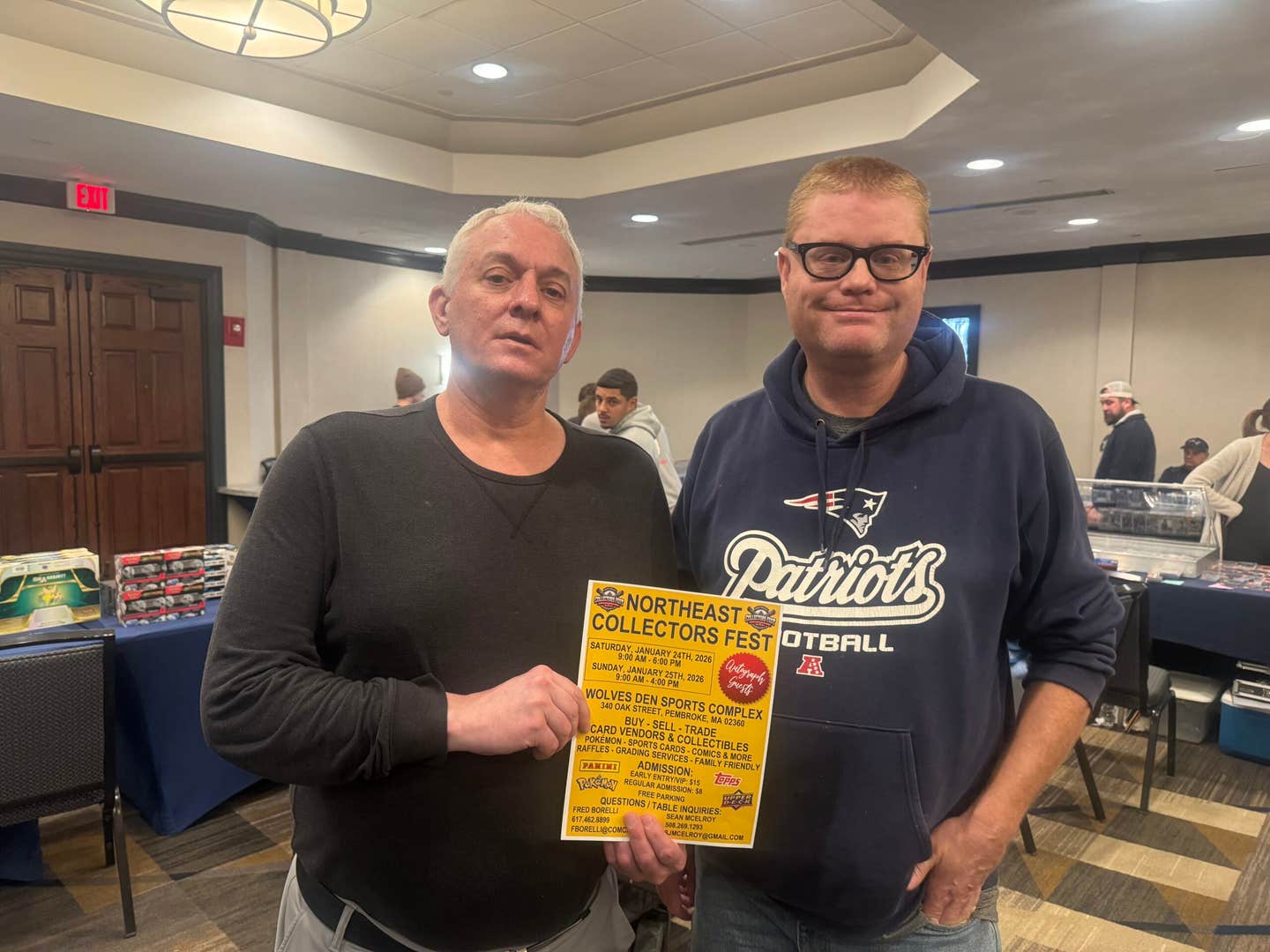Profiles
This sportswriter had best seat in the house
In 1951, Bobby Thomson hit his “Shot Heard ’Round the World” for the New York Giants against the Brooklyn Dodgers in one of the most dramatic endings to a playoff game in baseball history. Rookie sportswriter Charley Feeney was at the park that day covering the Giants for the Long Island Star Journal.
It was a memorable first year for the writer who would go on to write for the next 35 years. He covered the New York Giants, New York Yankees and New York Mets from 1951-66. In 1966, Feeney moved to Pittsburgh where he covered the Pirates for the Pittsburgh Post-Gazette from 1966 until his retirement in 1986.
In 1996, Feeney was awarded the J.G. Taylor Spink Award, an award that was first issued in 1962 to recognize baseball writers for their contributions to the field of baseball writing.
The recipients of the Spink Award are selected by the Baseball Writers Association of America during the winter meetings and are then inducted into the Baseball Hall of Fame in Cooperstown during the following year’s induction ceremonies. Feeney was inducted on Aug. 3, 1997.
He is a Baseball Hall of Famer that many of today’s fans and collectors know little about. He is an 82-year-old walking history book. He has not written since his retirement in 1986 and resides in the same apartment as when he moved to Pittsburgh 40 years ago.
SCD had the opportunity of meeting with Feeney recently to discuss his career.
SCD: How did your writing career get started?
CF: When I got out of the service, my father knew people at the Long Island Press, it was a Newhouse chain of papers which also included the Long Island Star Journal and some other papers. Starting in 1946, I started writing local bowling scores and then started writing weekly about boxing at Sunny Side Gardens in Queens. The fighters in these matches were typically about three or four fights away from fighting main events at Madison Square Garden. I remember my father taking me to see Joe Louis fight at Madison Square Garden before the War. In 1950, some of the bigger papers folded and the Long Island Press and Star Journal decided to go National. Jack Lang was covering the Dodgers, so I started covering the New York Giants primarily and also covered some New York Yankees home games. After the 1951 season, I attended my first spring training with the New York Giants in Arizona in 1952.
SCD: What was it like covering the Giants as they made the run at the Dodgers at the end of the 1951 season?
CF: The Giants did go on a great run while the Dodgers were playing .500 ball. They then picked up a game here and a game there on the Dodgers. Just before the final series, the Giants were up in Boston where the Giants won the final game of the series. On the train back from Boston, word came that the Dodgers had beaten the Phillies in extra innings. Leo Durocher simply announced his starting pitcher and the city of New York got ready for a final three-game, head-to-head series between the Giants and Dodgers.
After splitting the first two games, the Giants sent Sal Maglie against Don Newcombe in the finale. The Giants trailed late until Bobby Thomson came along. Thomson had some problems at third base that day on a few balls that could have gone as a hit or an error, but he came through in the clutch with his bat. It was not a long home run, but more of a line drive.
SCD: Where were you when the home run was hit?
CF: I was in the press box for the game and later went down to field runway when the home run was hit. That ball would have been off the wall in most parks. I might be off on the measurements slightly, but the left-field foul line in Ebbets Field was about 279 feet and the right-field foul line only went about 257 or 259 feet. Most of the visiting writers quickly scooted out of the Dodgers clubhouse and headed over to the Giants clubhouse.
I remember that an hour and half or so after the game, Pee Wee Reese came over fully dressed to the Giants clubhouse to see Durocher, whom Pee Wee played for earlier in his career when Leo was the Brooklyn manager. Larry MacPhail of the Dodgers’ organization had questioned Durocher about whether Pee Wee was going to be able to play shortstop in the majors. Durocher was usually pretty tough on players, but said that Pee Wee was a “nervous kid” and uncharacteristically let him alone. Reese, of course, later matured and had a Hall of Fame career.
So Reese comes over to see Durocher at the end of the game and breaks down crying. Durocher hugs him and told the press “No pictures, no pictures.” That was one of the things I most remember after the game.
SCD: You then went to your first spring training in Phoenix with the Giants in 1952.
CF: Yes, I remember the Giants went on a road trip that spring training where they would travel to Los Angeles and San Francisco. Leo Durocher and his actress wife, Larraine Day, had a big party during that road trip. There were a bunch of movie stars there; people like Frank Sinatra. That was very memorable.
SCD: New York was a city that eventually saw the Giants and the Dodgers both relocate to the West Coast.
CF: I remember the owner of the Dodgers one time taking a sportswriter in a plane over Brooklyn saying “Why would I ever move the club from this area?”
But he was already making plans to move the club. The Giants owner was intending to move the Giants to Minneapolis where their farm club was, but the league wanted to have two teams out on the West Coast. It is funny, people thought that the Dodgers would go out west and fold, because people thought there were just movie stars out there and people would not support baseball, but the Dodgers drew well from the beginning. The Giants moved out to California and played in a stadium that was 75 degrees at first pitch and could drop to 45 degrees by the fifth inning, and that wind. As far as New York baseball went, the Yankees’ attendance did not dramatically increase after the two teams relocated. Dodgers and Giants fans did not become Yankees fans. What happened was that horse racing became real big in New York City. Some races that typically drew 15,000 people all of the sudden were drawing 30,000-40,000 people.
The lack of a National League team in New York City led to some discussions about some outsiders starting a new baseball league. Major League Baseball was somewhat concerned with this notion and ended up creating the New York Mets in 1962 to fill the void.
SCD: After the Giants left, you ended up covering the New York Yankees and later the New York Mets.
CF: Yes, I was still writing for the Long Star Island Star Journal and Long Island Press, which was published by the same group. We probably had as many readers between those two papers as the New York Post had. Jack Lang had covered the Dodgers, but started covering the Mets in 1962, while I covered the Yankees. I went to the Journal American in 1964. I worked with Dave Anderson there who wrote for the old Brooklyn Eagle and is actually still writing to this day for the New York Times.
SCD: What brought you to Pittsburgh in 1966?
CF: Three papers folded on the same day in New York, there was a mass union strike. I called Al Abrams, the sports editor of the Pittsburgh Post-Gazette and told him I would like to work for him. I went for an interview. I thought that I would be hired for one of the Pittsburgh suburban papers, but Al Abrams told me that they decided to bring me straight into the main paper, the Pittsburgh Post-Gazette, in May 1966. I ended up writing occasional articles for the Sporting News, too, eventually.
SCD: You also became an official scorer at Pirates games.
CF: Yes, I scored for the Pirates for several years. I remember that Bruce Kison was throwing a no-hitter and there was a ball hit to Phil Garner that ended being ruled a hit by the scorer that day. Kison came up to me after the game and said that he wished I was the scorer that day, but I told him a would have ruled it a hit, too. It was shortly after this that the paper decided that a writer being an official scorer was a conflict, so the writers were not allowed to score any more.
SCD: Speaking of scoring, when Clemente was sitting on 2,999 hits, he hit a ball up the middle in a game that was bobbled by the infielder and Clemente ended up reaching first. Roberto had some postgame comments that he thought it should have been a hit and he went onto to say that he thought he lost two batting titles during his career due to scoring decisions that he thought should have gone his way.
CF: Yes, that is a true story. Clemente thought I was the official scorer that day. He later found out that Luke Quay was actually scoring that day. Clemente and Luke were close, and Clemente ended up apologizing. It was ball that took a bit of a tricky hop to the second baseman. I thought it was an error and Quay called it an error right away. I never believed in that stuff that the scorer has to have time to make a decision. That bugged me. You should be able to call it when it happens. I had an ego when it comes to scoring. I always felt that I was one of the best scorers. I took pride in my scoring and never played favorites whether it was in Pittsburgh or New York.
SCD: What else can you say about Clemente?
CF: It was great to see him play, I saw him make some great catches in the field. He also had a great arm from right field. In his era, it was tough for those guys. Clemente did not know any people initially in Pittsburgh and there was a verbal communication gap. Some clubs started to bring up an extra Latin player on the roster so they could room together and the players would go out to eat together. By the time I came to Pittsburgh in 1966, Clemente was not a green player. He had been in the majors for quite some time. I remember Tony Perez, who was very pleasant, but had some language barriers. It was tough for those guys.
SCD: You covered all the World Series during your career. It must have been special covering the Pirates in 1971 and 1979 when they won the World Series.
CF: Absolutely. In the 1971 World Series, I remember how much Danny Murtaugh enjoyed that series and beating not only the Orioles, but Earl Weaver. Earl Weaver was a kind of a hot shot manager, a very knowledgeable manager. Earl had taken some verbal shots at Buccos shortstop Jackie Hernandez during the series who was getting more playing time due to Gene Alley being hurt.
Clemente called an apparent meeting for the team to rally around Jackie. The players started patting him on the back and boosting him up at every opportunity. It was fitting the last out of the Series was a ball hit to Hernandez. Also, during the pregame meeting before Game Seven in that series, Weaver told the umpires how they had done such an outstanding job and they really called a good series. This unnerved the veteran Murtaugh who saw Weaver as trying to butter up the umps for Game Seven. Steve Blass started Game 7 for the Pirates and was having some control issues early.
Weaver then came out to rattle Blass more and had a meeting at home plate, complaining to the umpires that Blass was not touching the rubber when he was delivering his pitch. There was actually a lengthy delay while this argument went on. Ironically, it was after this incident and delay that Blass regained his composure and settled in for the rest of the game pitching a complete game victory.
SCD: Steve Blass would later become a big story as he suddenly and inexplicably lost the ability to find home plate with his pitches. This is one of the great mysteries in the game of baseball. He had 19 wins in 1972 and finished second in the Cy Young voting. After the 1972 season, Blass’ close friend Roberto Clemente was killed in the airplane crash. This also coincided with Blass’ pitching woes (Blass delivered Clemente’s eulogy).
Now, whenever there is a ballplayer that suddenly loses the ability to throw accurately, it is known as “Steve Blass Disease.” You were covering the Pirates during Blass‚ struggles, what do you recall about this time?
CF: It was a mystery to me like it was to everybody. I remember his last spring training. He had another one of those horrible outings. After the game, I saw him talking to his two young children on the field. I am figuring that he is telling them that “Daddy was not going to be in baseball anymore.” I later asked Steve what he was telling the kids, and he said that one of the kids had a fight in school and he was trying to help him with a talk. I should have known, Steve was always an optimist. He tried to stay away from the negativity. I remember Danny Murtaugh toward the tale end of Steve’s career, getting thrown out of a game arguing with the umpires in a game in which Steve was pitching. Murtaugh said that he wanted to try to get the media to talk about him (Murtaugh) to take some of the heat off of Steve.
Murtaugh had retired after the 1971 World Series championship and Bill Virdon was brought in and managed the club in 1972 and 1973. This was the time Steve went downhill. Virdon had his own pitching coach, Mel Wright, and the Pirates were so desperate to save Blass’ career that there was talk of bringing Murtaugh’s pitching coach, Don Osborn, back to help Blass, and they did. Of course, the Pirates ended up bringing Murtaugh back as manager in 1974, but none of these things helped Steve find the plate.
SCD: The next Pirates World Series was in 1979.
CF: Yes, the Pirates came back from a 3-1 deficit in that Series. I remember Chuck Tanner’s unrelenting philosophy that they cannot lose. He kept pumping up his players. He never gave up. I remember Tanner’s mother passed away during that Series and him telling the club that his mother was up there pulling some strings for the club. I have a commemorative 1979 World Series bat on the wall with my name engraved on it, that is one of the things I saved.
SCD: In covering the World Series and All-Star Games, did you save press pins?
CF: Yes, those were given to the writers covering the games. I remember that there was a guy in East St. Louis that kept writing me and asking me for the press pins for his disabled son. I sent the pins to him every year for four or five years. I later found out at a writers’ function that this guy was a phony and been doing this with all the writers, so I stopped sending the pins. I saved the pins from then on. My wife later sold them. I was fine with that, I saved my last year’s press pins from the 1986 season. I was never really a saver. I did not save any autographs. I gave away any memorabilia to people that I thought would appreciate it.
SCD: Did you cover Dock Ellis’ no-hitter that he was supposedly under the influence of LSD?
CF: No, that was a Saturday game. I always worked and rarely missed a game, but I had a rule that I did not work on Saturdays. Actually, of all the scoring I did, I was never a scorer at a no-hitter. Dock was quite a character. He always looked to get a reaction out of people. I remember when he was wearing hair curlers in the bullpen in Chicago. He was always outspoken. I would not to have liked to be his manager, but I got along with him fine.
SCD: Did you see Bob Moose’s no-hitter against the Mets in Shea Stadium?
CF: Yes, ironically, that was a Saturday game, too, and I was not going to go. Do you know of (New York City columnist) Jimmy Breslin? Well, he and I grew up together, and he wanted me to go with him to the Mets game that day. We had great fun together, I knew that there was a no-hitter in progress. Breslin occasionally complained about baseball, so I told Breslin that we should leave in the seventh, to pull his chain a bit. He said “We can’t leave, this is a no hitter so far.” We went down and met with Bob Moose after the game.
SCD: What can you say about Forbes Field?
CF: It was an old ballpark like Ebbets Field, the thing I most remember about Forbes Field was how fun it was to go to Frankie Gustine’s bar across the street after the game. That was a big ballpark, centerfield was very deep.
SCD: Did you see Willie Mays’ famous catch in Game One of the 1954 World Series?
CF: Yes, it is funny how that catch gains in popularity. I have seen Mays make several much more difficult catches. Mays knew that park. He knew how much room he had. When you see that film, he pounded his glove right before the caught the ball. That tells me Willie had a good read on the ball and he then caught it like a football player would catch a pass, over his shoulder. I saw him make several diving catches on the dead run that were much more difficult.
SCD: Were there any other baseball games that stuck out in your mind?
CF: I remember a brawl that broke out one time between the Pirates and Cubs at Wrigley Field. Both benches emptied, and I saw one of the coaches for the Cubs had Danny Murtaugh up against the fence near the Pirates’ dugout. There were a few Pirates that came over to get the coach off of Murtaugh, but what the Cubs coach was doing was protecting Murtaugh. He said, “Danny, you have a bad heart. I do not want you to get messed up in the fight.” The Pirates players heard this and then left them alone. This Cubs coach was protecting Murtaugh.
SCD: Who were some the guys that you loved to see play?
CF: Pete Rose, Tony Perez. I always loved to see Tommy Henrich for the Yankees. He always seemed to get a clutch hit. I liked Steve Garvey, I enjoyed watching him make plays, he was a real professional at his position.
I liked watching Bill Mazeroski play. The first time I saw Maz play, I was covering the New York Giants. I actually saw him get his first hit. I remember watching Maz play defense his first few years. Some other New York writers said he was not as good as Red Schoendienst. I did not say anything.
The more I watched him. I realized how special of a ballplayer he was at second base, and I was not working in Pittsburgh then. If you really knew baseball, you could spot a special player in Bill Mazeroski. I remember talking to some Cubs infielders one day at Forbes Field. They told me that the reason they did not sign with the Pirates was because of Mazeroski; they knew that nobody could have beaten Maz out at the position. When I later moved to Pittsburgh, I got to know Maz personally. He’s a great guy.
SCD: Who was an interesting interview?
CF: Dave Parker comes to mind. He would always start off ribbing you, but was a great interview. When you are a writer, you really remember the guys who were nice to you. One of those guys was Whitey Herzog. What a pleasure he was. He always called me “Chubby.” I remember an All-Star Game one year where all the writers were getting on a bus to go to the game. Herzog got on the bus and took over the driver’s seat and he drove us to the game. He said he saved our lives because the assigned bus driver was drunk and he wanted to make sure all of us got to the game OK.
SCD: You also knew Pittsburgh Steelers owner Art Rooney Sr. and met him in New York and had a story about horse racing.
CF: You have done your research. I remember seeing the Steelers play the New York Giants in Yankee Stadium in 1962. I remember seeing Art before the game. He was also in the horse racing business. I told him that there was a trotter named after one of the New York writers and I thought that was neat.
Rooney did not say anything. Two years later, I get a note in the mail from Art Rooney. It says, “This is to announce that a horse named “Charlie Feeney” was born this morning at our stables in South Carolina. We do not think it is a good horse, but we will find out.” Sometime down the road, I was informed that “Charlie Feeney” was running his first race at Aqueduct in New York. I told my family and all the guys in the office that the horse was running and everybody gave me money to place bets. It was a long shot, but the horse won the first race. It paid $58. It was a long shot.
Unfortunately, I forgot a few people that I was supposed to place bets for, so I lost money as I had to pay those people out of my own pocket. That horse won five of its first 13 races. In the New York Daily Mirror, writer Dan Parker stated in the paper the next day that the horse was named after Charles “Chub” Feeney, who was the vice president of the San Francisco Giants and would become the National League president later. I was sick. I corrected him and they put corrections in the paper for about a week that Art Rooney had indeed named the horse after me.
SCD: You retired as a writer from the Pittsburgh Post-Gazette in 1986 and won the J.G. Spink Award in 1996 earning you a Hall of Fame induction in Cooperstown in 1997.
CF: Yes, I have the Spink Award framed here, it was a great honor.
SCD: Did you save anything from the Hall of Fame Induction?
CF: I saved the Spink Award. They do not give the writers rings or anything. Louisville Slugger sent me a mounted bat that I have displayed. They asked if I wanted my name engraved. I asked them engrave Bill Mazeroski’s name on it. I always liked watching Maz play. I did not sign many autographs there. The people wanted the players’ signatures. In regards to Hall of Famers, one of the nicest things that happened to me was Mike Schmidt and Johnny Bench stopping into the press box my last year and wishing me a happy retirement. That was really special.
SCD: Do you get mail autograph requests?
CF: Yes, every once in a while, not too much. I sign for people. I got a letter about a month ago asking me for permission for the person to send a baseball to me and what it would cost. I wrote him back and said it would not cost anything. He sent me a baseball and had it all prepared so I could mail it back. It had the postage on it and everything. Some people ask me to write “Hall of Fame” on the item. I sometimes write “HOF 1996” accidently because that was the year I won the Spink Award. I try to write “HOF 1997” when I remember because that was actually when I was inducted.
SCD: I remember you making one autograph appearance at the 1997 PirateFest after you won the Spink Award.
CF: Yes, it was funny. I only encountered one manager who got on my case a bit and that was Harry Walker, who managed the Pirates from 1965-67. He told me that I should always write only positive things about the home team Pirates, but I always wrote truthfully. So, who did they pair me up with that year to sign autographs with at PirateFest? Harry Walker. That was really the only organized signing I have ever done.



